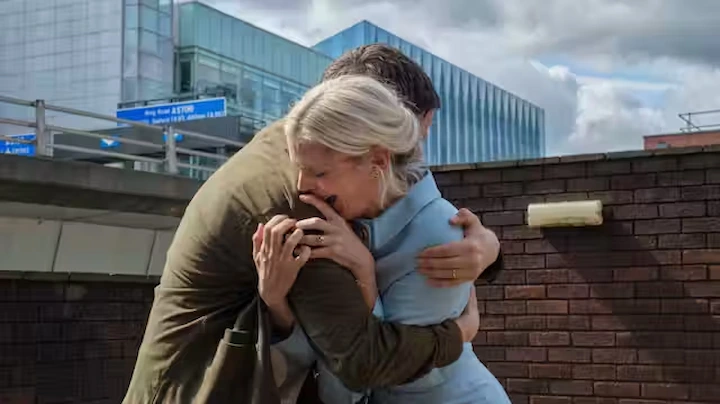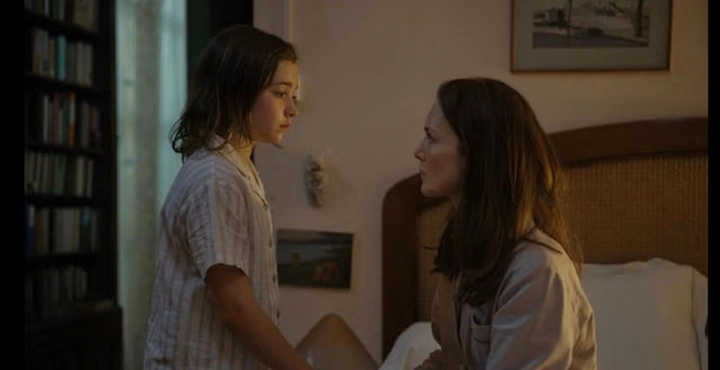Is Rebecca Walsh Based on a Real Kidnapper in The Stolen Girl?
The Stolen Girl, a suspenseful drama available from Freeform, tells the chilling story of Lucia Blix, a young girl who is abducted by her friend’s mother, Rebecca Walsh. This kidnapping mystery morphs into a complex tale about hidden identities and emotional trauma, inspired by real-life abduction cases, including that of Gloria Williams and Kamiyah Mobley.
She discusses whether the character Rebecca Walsh is based on a real person and how the show addresses real-world issues through its fictional story. Overall, it explores the fine line between fiction and reality, making The Stolen Girl relatable to many viewers as well. Throughout the field are keywords like “true crime,” “child abduction,” and “based on a true story.”
Fiction Fuelled, Shaped By Reality
While The Stolen Girl is not a true story, it was inspired by real-life events. The series is adapted from Alex Dahl’s psychological thriller novel Playdate. The book lays the groundwork for a fictional drama, but its themes reflect real-life cases of child abduction.
The woman who kidnaps Lucia, Rebecca Walsh, is a fictional invention. But the real-life kidnapping methods and motives are eerily similar to hers. This mixture of underlying fact and superficial fiction is what provides the show its emotional heft.
Details from real life are plucked to make true crime shows feel more authentic. Rebecca’s behavior resembles that of infamous cases such as Gloria Williams, who abducted a baby girl from a Florida hospital and raised her as if she were hers.
This parallel serves to deepen Rebecca’s characterization. Though she isn’t based on any specific individual, she has characteristics of so many abduction scenarios. Viewers intuit the truth behind the fiction, so the drama feels raw and almost personal.
Kamiyah Mobley And Her Mother, Gloria Williams
The most famous real-life comparison for The Stolen Girl is Gloria Williams’s story. In 1998, Williams kidnapped Kamiyah Mobley from a Jacksonville, Florida, hospital, where she was born. She kept Kamiyah for 18 years as her child until the truth emerged in 2017. Now this is an actual case that horrified the country. Williams was a loving mother, which made the discovery more heartbreaking.
Rebecca Walsh also seems nurturing and kind in The Stolen Girl — until the truth emerges. Using her cover, she deftly orchestrates the lives around her so she can get to Lucia. The parallels to Williams’ story are hard to miss. Each is convinced she is doing the right thing, even if it is against the law. It is this warped sense of love that creates the emotional dynamic at play in the show.
I like how writers of The Stolen Girl seem to create an emotionally complex character, building on Gloria Williams’ story as a point of comparison. Rebecca is not villainous — she is wounded. And, in that brokenness, viewers witness echoes of real-life tragedy.
Rebecca Walsh Is An Amoral Character
What sets Rebecca Walsh apart from other kidnappers is her moral ambiguity. Most TV villains are just plain evil, but Rebecca is not a traditional casting. There’s a logic to her (even if a wrong logic). It does not make her actions excusable, but it makes them understandable to the audience. This introduces psychological layers and helps keep the audience engaged.
Rebecca is not a flat-out villain. Her story unfolds slowly. As audiences learn more, they begin to understand how her history, her pain, and her desperation inform her decisions. She serves as a representation of the ways that trauma can manifest in toxic behavior. The show doesn’t expect us to pardon her, but it does ask us to ponder.
This character design contributes to a broader trend in actual crime storytelling, wherein criminals are depicted as individuals with complex stories, not just labels. It compels viewers to interrogate the balance between justice and empathy.” Rebecca serves as a mirror that reveals the messy truths of parenthood, mental health, and human behavior.
Why Real Events Often Find Themselves In The Fictional Kidnapping Of Pirates
Crime dramas straddle a thin line between reality and fiction. Writers borrow from real cases because they are based on real fears and genuine social problems. The kidnapping of a child strikes a chord, one certainly when it’s a person the family knows and trusts. And that’s something The Stolen Girl examined beautifully.
Rebecca’s character embodies a type of kidnapper: someone who takes someone else for emotional reasons, as opposed to money or revenge. While rare, these cases are often the most shocking. They demonstrate how individual trauma and mental illness can push someone into committing unspeakable acts.
In fiction, this opens up a richer narrative. By crafting characters like Rebecca, writers have the opportunity to tackle serious subjects in a way that is digestible for viewers. They can draw attention without making real victims the stuff of entertainment. It’s a balancing act — but when executed, as in The Stolen Girl, it results in stirring storytelling.
FAQs
Is The Stolen Girl a true story?
No, the show is inspired by Alex Dahl’s novel, a fictional book called Playdate, but it also draws on themes and elements from real-life child abduction cases.
Who is Rebecca Walsh based on?
Rebecca isn’t based on a single person, but she shares traits with Gloria Williams, who abducted 15-year-old Kamiyah Mobley in 1998.
Did Kamiyah Mobley grow up with her kidnapper?
Yes, Kamiyah Mobley grew up with Gloria Williams for 18 years before finding out who she was.
Why are fiction crime stories often like real cases?
To make stories more believable and emotionally engaging, writers incorporate real-world events and realities, including reflections on contemporary fears and the complexities of culture and politics.
What makes Rebecca Walsh different from the other characters in the story?
Rebecca is morally complex. She isn’t just a villain; she has motivations and trauma that drive her behavior, making her a fascinating and complicated character.
Final Words
The Stolen Girl is fiction, but it resonates because it reflects the reality in small and big ways. Characters such as Rebecca Walsh remind us that the line between right and wrong is not always so clear.
By using real-life tragedies, such as the Kamiyah Mobley case, the show adds emotional weight and challenges viewers to consider what people might do in the name of love, loss, or redemption. Ultimately, it is not just a story of a kidnapping; it is a story of the human condition.
Table of Contents



